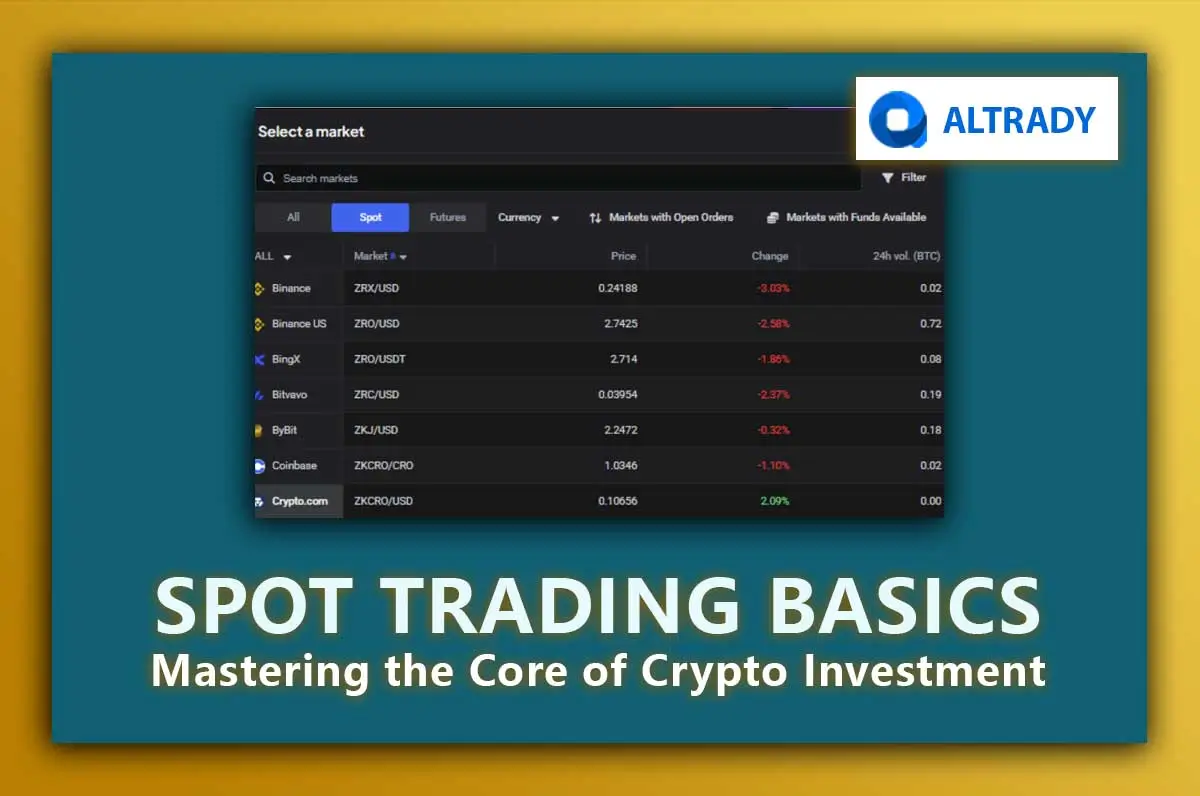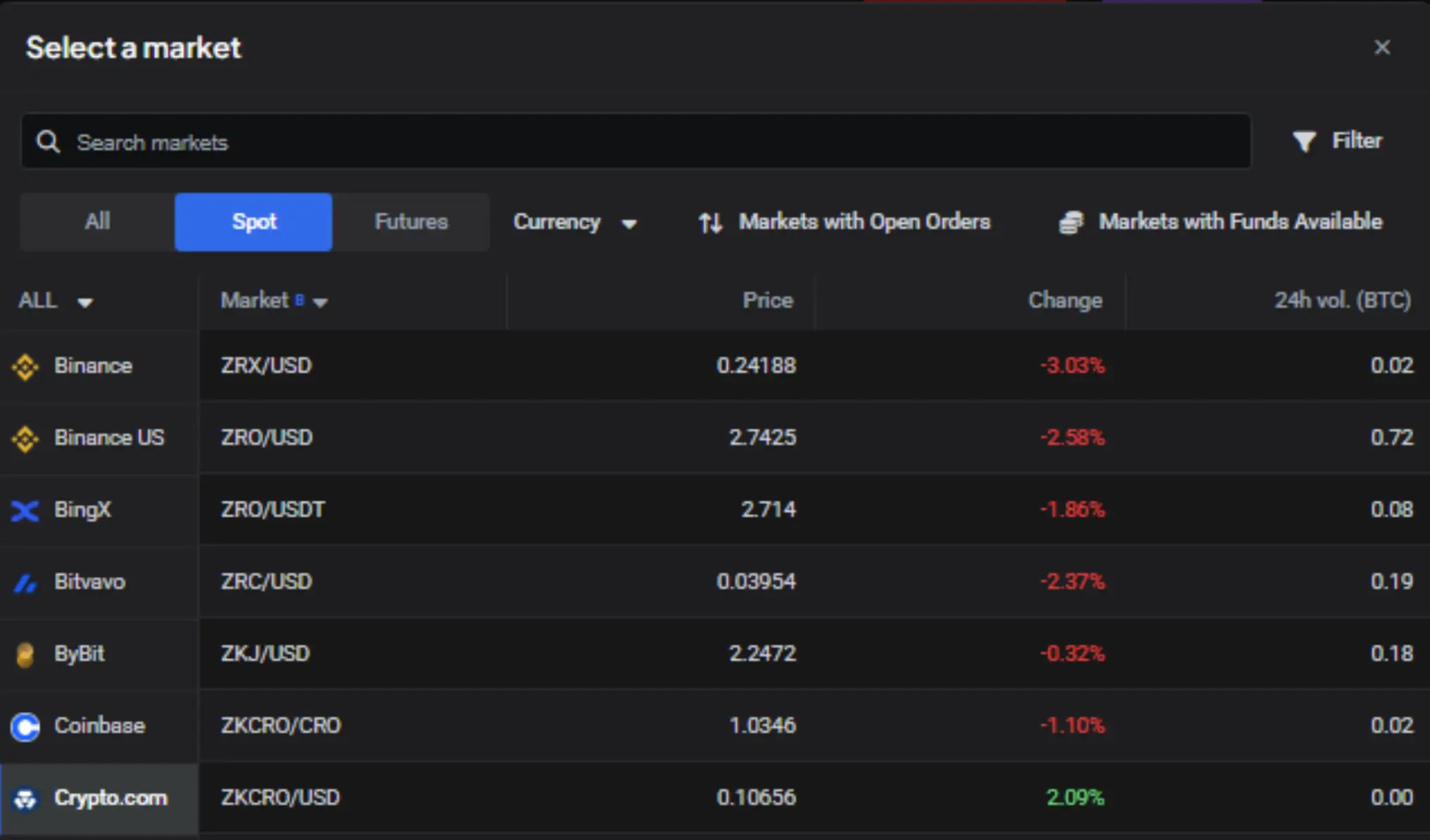Black Friday is loading…
Get 40% off with Altrady’s yearly plan and take the lead.
.svg)
.svg)
.svg)
.svg)
.svg)
.svg)
.svg)
.svg)
.svg)
.svg)
.svg)
.svg)

Cryptocurrency trading leans on different methods to participate in the market: first, you could buy and hold; second, you could speculate; third, you may want to predict the asset prices. Among these approaches, one figures as the basis for all the other, and that is spot trading.
Typically, spot trading is the primary process beginner crypto traders use to invest safely. Why? Discover it through this guide, which delves into the basics of crypto spot trading, its advantages and disadvantages, and how it works.

Spot trading is the most straightforward method for participating in financial markets. This trading type is where transactions occur instantly, ensuring the immediate exchange between buyers and sellers, as follows:
It may seem at first sight that spot trading does not bear further intricacies beyond purchasing and selling an asset at a specific price. However, it revolves around critical investment concepts and crucial mechanisms that help grasp how the spot market works. Moreover, those mechanisms set the basis for other trading types (e.g., derivatives trading).
Spot trading is, above all, a mid-term to long-term approach. It caters to seasonal investors more than speculative traders. More often than not, spot market participants buy, hold, and accumulate assets based on fundamentals. In the crypto sphere, for example, the term HODL advocates for staying optimistic in long-term market growth even when it dips heavily.
Accessing the spot market for digital currencies is granted by cryptocurrency exchanges, platforms structured to process quoted transactions between buyers and sellers. Exchanges act as custodians of the traded digital currencies, meaning they are responsible for delivering the assets to buyers and crediting sellers.
The infrastructure to carry out such a task consists of the following:
The spot price of a crypto asset is the current quotation at which market participants can purchase or sell the underlying digital instrument. This price responds to existing bids and asks, providing a real-time market valuation.
The spot price differs from other forms of calculating an asset valuation, such as derivatives trading, which considers additional matters based on future prices.
The first is the exchange rate for immediate transactions based on current market conditions, while the second settles a value for a future date according to market expectations.
The spot rate is for quick conversions at specific moments. For example, Binance allows you to exchange crypto pairs using its conversion feature. This way, users interact with the spot market since conversions depend on the spot rate.
Read: Crypto Trading Platforms with Leverage: What You Need to Know
Despite the appealing simplicity shown by this trading type, it is noteworthy to recognize the potential complexities involved. Given that buying and selling in the spot market implies an investment, thriving in such activity requires mastering other skills, such as the following:
Learn more about risk management with Altrady Trading Library.
Through spot trading, investors can directly acquire crypto assets. Limit or market orders are suitable depending on the prices and immediacy of the investment. The spot market reflects current supply and demand and transparent asset valuation, allowing traders to build portfolios. Nevertheless, the profits and strategies are limited.
Exchanges grant access to spot markets, while alternative crypto trading platforms, such as Altrady, offer access to multiple exchanges simultaneously. When you seize a free trial account, you also gain access to paper trading to practice spot trading without risks powered by position management features that most exchanges do not offer